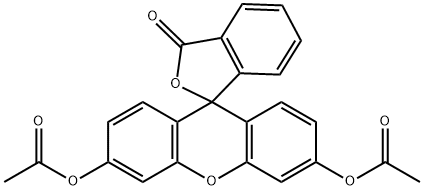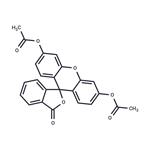| Melting point |
200-203 °C(lit.) |
| Boiling point |
494.73°C (rough estimate) |
| Density |
1.2738 (rough estimate) |
| refractive index |
1.6810 (estimate) |
| storage temp. |
−20°C |
| solubility |
acetone: soluble25mg/mL |
| form |
Crystalline Powder |
| pka |
6.4(at 25℃) |
| color |
Light yellow |
| PH Range |
Weak green uorescence (6.0) to strong green uorescence (7.2) |
| Water Solubility |
Soluble in chloroform, DMSO, ethanol, and water. |
| λmax |
490nm |
| ε(extinction coefficient) |
≥86000 at 488-494nm in 0.1 M NaOH |
| BRN |
62575 |
| Major Application |
LED devices, petroleum markers, identifying cancerous cells, detecting bacteria, virus, mitochondrial function in neurons, target molecules, living cells, viable Giardia cysts in water samples, apoptosis, evaluating live/dead state of algae, measurement of totalmicrobial activity in soil, treating ischemia |
| Biological Applications |
Assessing membrane
integrity/permeability;43–50 detecting/counting microorganisms; measuring microbial activity;
as a substrate for measuring acylases activity,
amidases activity,aminopeptidases activity,
arylsulfatases activity,chymotrypsin activity,
esterases activity;galactosidases activity,
glucosidases activity, lipases activity,
phosphatases activity, proteases activity; cell viability
assay; cytotoxicity assay; implantable
medical devices; as temperature sensor; treating
ischemic disease |
| CAS DataBase Reference |
596-09-8(CAS DataBase Reference) |
| NCI Dictionary of Cancer Terms |
FDA |
| FDA UNII |
YL39R93PRE |
| EPA Substance Registry System |
Spiro[isobenzofuran-1(3H),9'-[9H]xanthen]-3-one, 3',6'-bis(acetyloxy)- (596-09-8) |
| UNSPSC Code |
41116107 |
| NACRES |
NA.77 |



